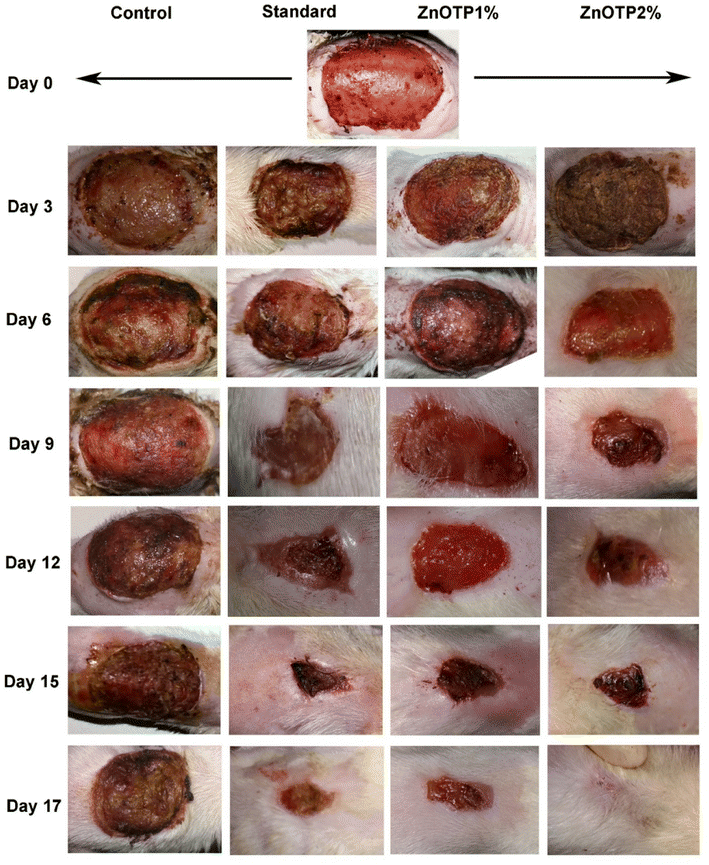 Open Access Article
Open Access ArticleCreative Commons Attribution 3.0 Unported Licence
Correction and removal of expression of concern: Ameliorative effect of biofabricated ZnO nanoparticles of Trianthema portulacastrum Linn. on dermal wounds via removal of oxidative stress and inflammation
Ekta Yadava,
Deepika Singha,
Pankajkumar Yadav*b and
Amita Verma*a
aBioorganic & Medicinal Chemistry Research Laboratory, Department of Pharmaceutical Sciences, Sam Higginbottom University of Agriculture, Technology & Sciences (SHUATS), Allahabad 211007, India. E-mail: amitaverma.dr@gmail.com
bPharmaceutics Laboratory, Department of Pharmaceutical Sciences, Sam Higginbottom University of Agriculture, Technology & Sciences (SHUATS), Allahabad-211007, India. E-mail: pypharm@gmail.com
First published on 28th June 2023
Abstract
Correction and removal of expression of concern for ‘Ameliorative effect of biofabricated ZnO nanoparticles of Trianthema portulacastrum Linn. on dermal wounds via removal of oxidative stress and inflammation’ by Ekta Yadav et al., RSC Adv., 2018, 8, 21621–21635, https://doi.org/10.1039/C8RA03500H.
The authors regret that there was an error in Fig. 3 whereby incorrect wound healing images were used. This was due to poor management of a large dataset of photographs and we apologize for this purely unintentional error. The correct Fig. 3 is provided herein. The accuracy and integrity of the replacement images in Fig. 3 have been confirmed by an investigation from the affiliated institution.
This correction supersedes the information provided in the Expression of Concern related to this article.
The Royal Society of Chemistry apologises for these errors and any consequent inconvenience to authors and readers.
| This journal is © The Royal Society of Chemistry 2023 |

